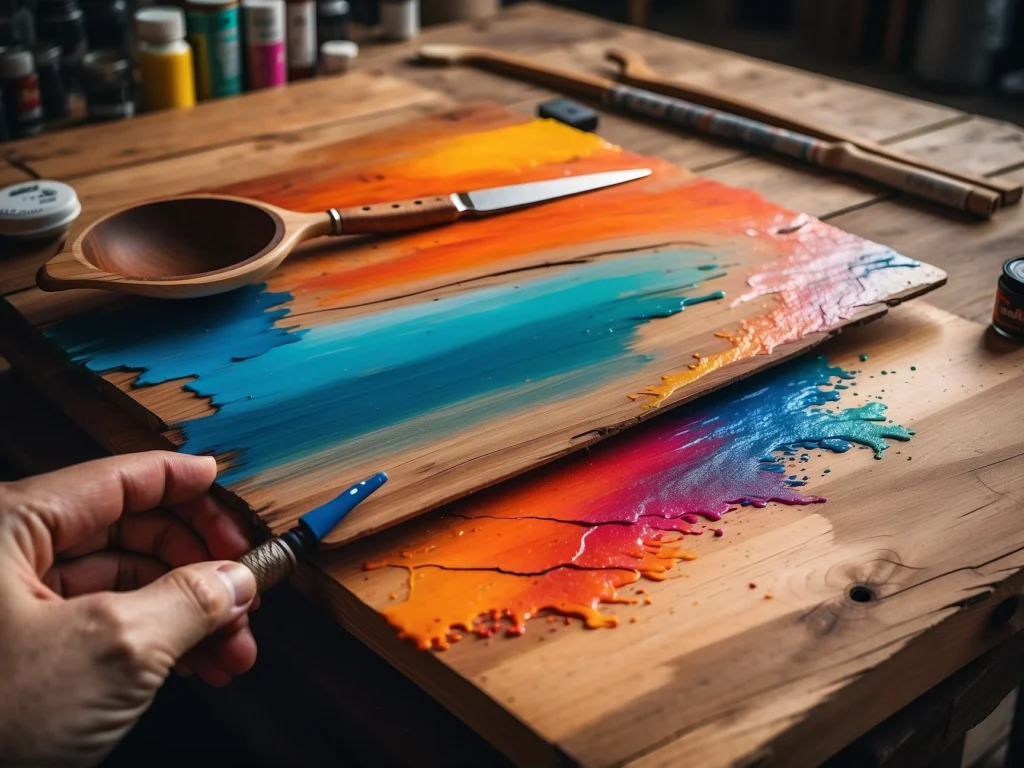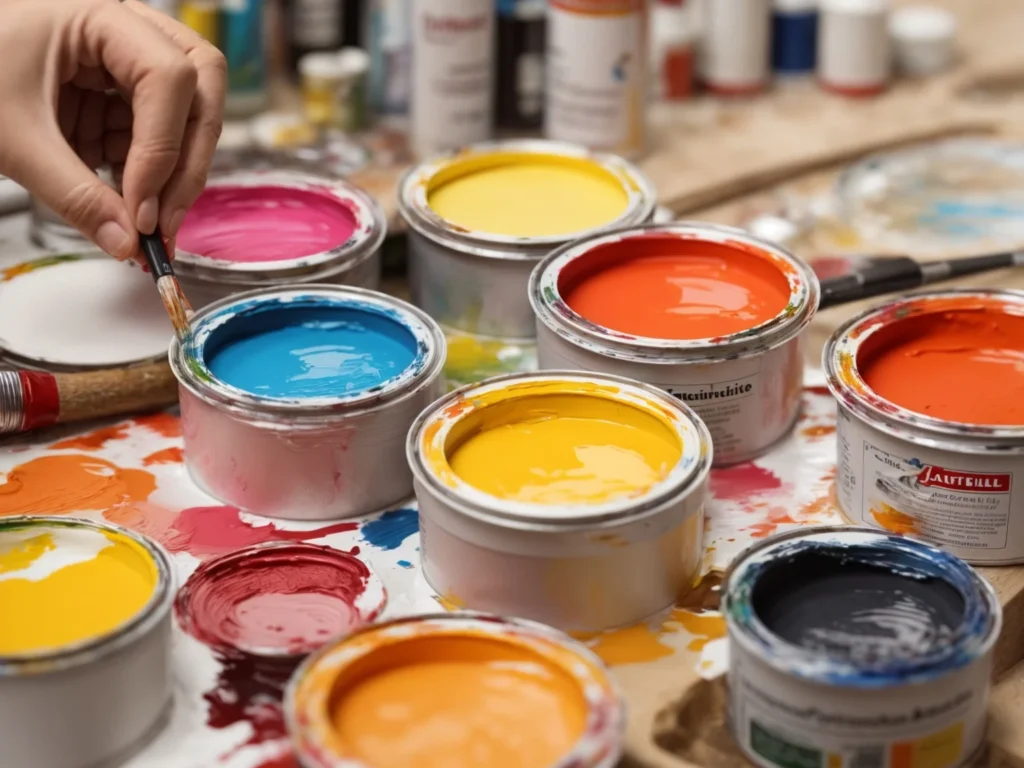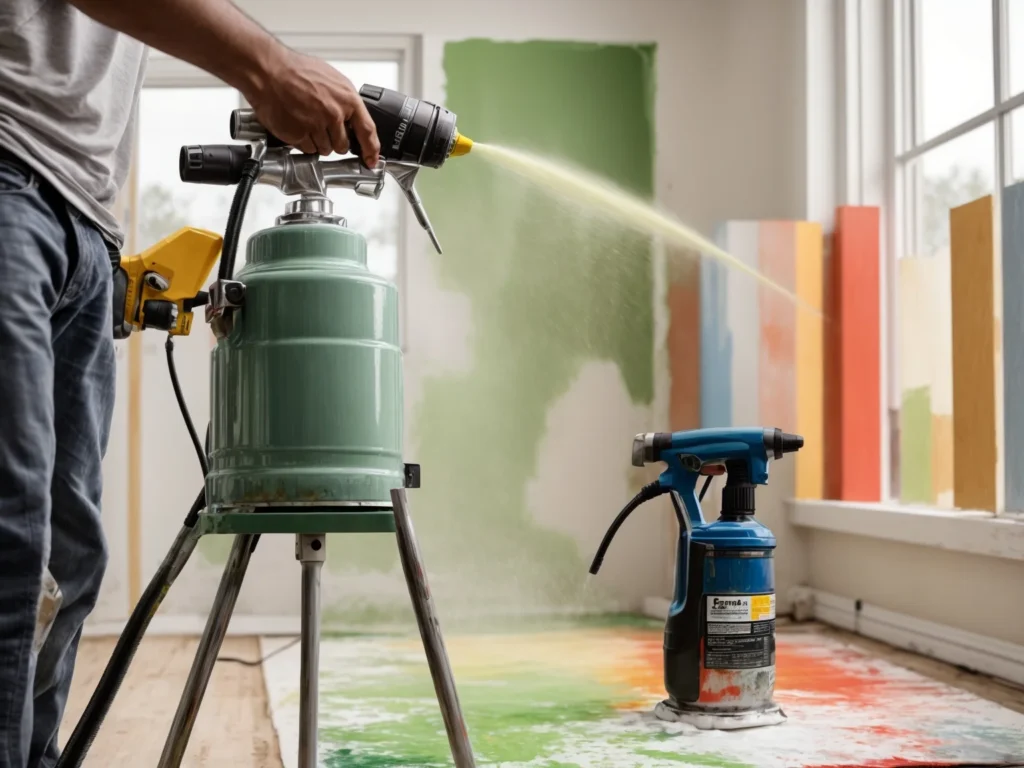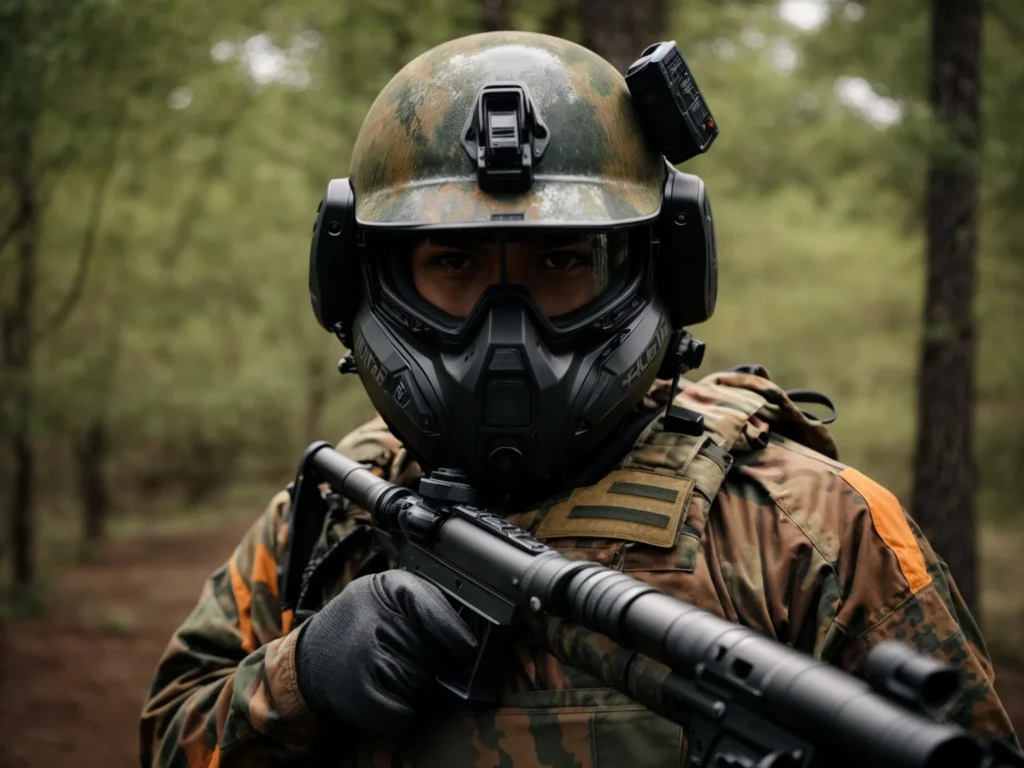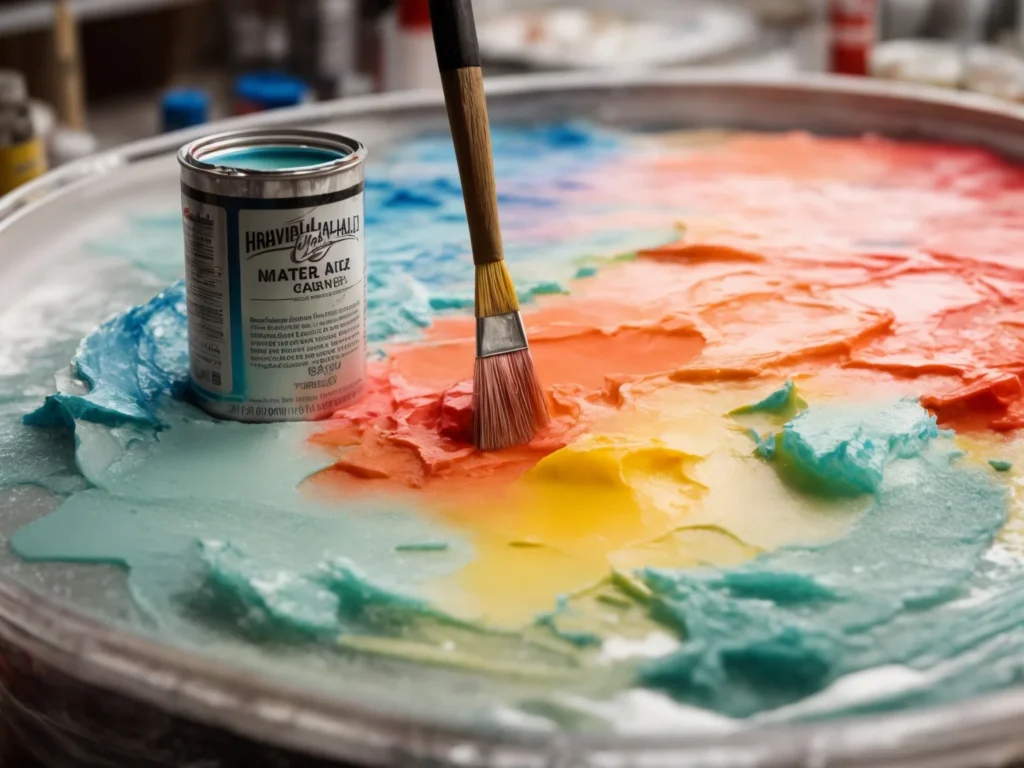Carbon fiber parts are prized for their high strength-to-weight ratio, stiffness, and beautiful glossy appearance showing the carbon weave pattern. But what if you want to change the look or color of your carbon fiber parts? Painting carbon fiber is possible, but it requires some special considerations compared to painting metal or plastic.
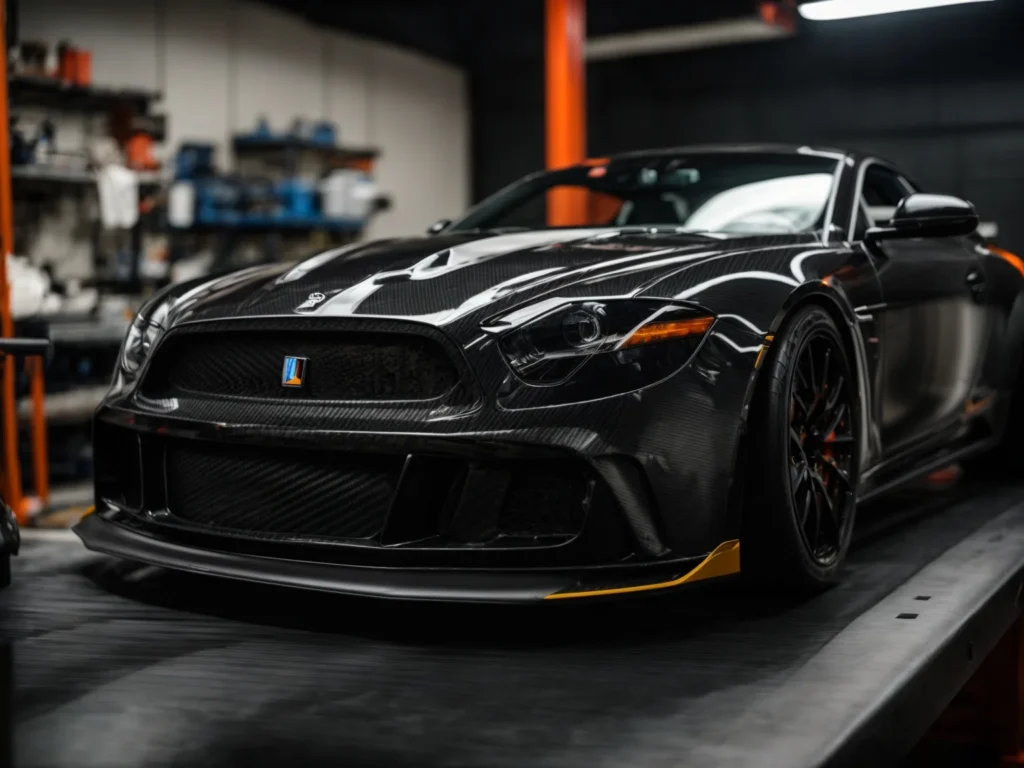
In this complete guide, we’ll cover everything you need to know about painting carbon fiber, including:
- Can You Paint Carbon Fiber?
- Surface Prep for Painting Carbon Fiber
- Primers and Paints for Carbon Fiber
- Application Techniques and Process
- Retaining the Carbon Fiber Look
- Cost to Paint Carbon Fiber Parts
- Painting Specific Carbon Fiber Parts
- Professional vs DIY Painting
Can You Paint Carbon Fiber?
The short answer is yes, you can paint carbon fiber, but it presents some unique challenges compared to other materials. The keys to success are proper surface preparation, using the right primers and paints, and taking care with the application process.
Carbon fiber on its own does not provide a very good surface for paint adhesion. The glossy outer clear coat applied to the cured carbon fiber parts creates a very smooth, slippery surface. For paint to cling properly, this clear coat has to be “etched” or abraded to give it some tooth for the paint to grab onto.
Carbon fiber composites are also naturally porous and will absorb paint and primer very readily. This means it’s easy for the paint to soak in too deep, so light coats are essential. Flexible paints and primers designed specifically for plastics also help provide maximum adhesion and prevent cracking or peeling as the carbon fiber parts flex.
With the right products and techniques, it is certainly possible to get great results painting carbon fiber. However, it does require more care and effort compared to materials like metal, fiberglass or wood which take paint more readily. Later sections will provide more details on processes and products.
Surface Preparation for Painting Carbon Fiber
The most important step when painting carbon fiber is proper surface preparation. Here are the key steps involved:
Remove Clear Coat – The outer glossy clear coat applied to the cured carbon fiber part must be removed to expose the rough carbon weave texture underneath. This is done by sanding or scuffing the surface. Start with 400 grit sandpaper and then work up to 600-800 grit for final smoothing.
Clean Surface – Use a wax and grease remover to clean the sanded surface and remove any contaminants or oils that could interfere with paint adhesion. Isopropyl alcohol also works well for this.
Apply Primer – A primer designed for plastics should be applied first to seal the porous carbon fiber surface and improve paint adhesion. More details on recommended primers in the next section.
Wet Sand Primer – Once the primer has cured, you can wet sand it with 1000 grit sandpaper to further smooth the surface. This helps produce a smooth final paint finish.
Clean and Degrease Again – Wipe the primed surface down again with a tack cloth and wax and grease remover before applying your topcoats of paint.
Proper preparation is crucial for getting the paint to bond well to the slick carbon fiber surface. Don’t skip steps in the surface prep process. The better prepared the surface, the better your final painted carbon finish will look.
Primers and Paints for Carbon Fiber
Choosing the right paint products designed for plastic and carbon fiber is also very important for a successful, long-lasting finish:
Primers – Look for a primer specifically made for use on plastics when painting carbon fiber. Some good options are SEM Plastic Primer, Spies Hecker 7350, and U-Pol’s UP5070 Plastic Primer. Flexible epoxy primers also work very well.
Paint – Use a flexible paint designed for plastic, carbon fiber, or automotive use when top-coating carbon fiber. Some good brands are Spies Hecker Permasolid HS Flex Additive or Mipa 2K Plastic Paint. For bikes, the Spray Bike brand works well.
Clear Coat – A flexible clear coat designed for carbon fiber or plastic helps protect the finish. U-Pol Max Flex Clear Coat or Spies Hecker Flex Additive work well.
The key is using paint products engineered to bond well and flex with the carbon fiber substrate without cracking or peeling. This is crucial to getting great looking, long-lasting results.
Application Process and Techniques
With the surface prepped and the right paint products selected, now the application begins:
Light Coats – Due to the porous nature of carbon fiber, paint soaks in quickly. Apply very light coats, especially for the first 2-3 priming coats to avoid excessive absorption.
Allow Proper Curing – Follow the product directions for drying times between coats. This is usually 10-15 minutes for primer, and up to an hour for paint or clear coat layers. Rushing this can ruin the finish.
Use HVLP Spray Guns – For professional auto body shop-quality results, use an HVLP spray gun to apply the primer, paint and clear coats. This gives the smoothest, most consistent coverage. Multiple light coats are better than heavy coats.
Consider a Paint Booth – Use a professional paint booth or an improvised DIY booth to avoid dust nibs in your paint from contaminants floating around. This keeps the carbon fiber surface clean.
Wetsand Between Coats – Some light 800-1000 grit wetsanding between coats can help smooth out any small imperfections or roughness from the porous carbon fiber.
Mask Off Areas – Use painter’s tape and masking paper to cover any areas you don’t want painted or overspray on. Carbon fiber composites can be damaged by chemical paint strippers if you need to remove overspray after the fact.
DIY Roller Application – While spraying is ideal for the best finishes, small parts can be painted successfully with a foam roller and brush for less investment in tools. Just be extra careful of runs and drips.
Patience and care in the application process helps produce that smooth, blemish-free painted carbon look you want. Take your time with the proper steps and materials for success.
Retaining the Carbon Fiber Look
One downside to painting carbon fiber is it removes the beautiful, iconic carbon weave appearance. Some techniques can help retain or mimic the carbon look after painting:
- Use stencils and masks during painting to preserve raw carbon sections.
- Hydrodipping over raw carbon can add color while showing carbon texture.
- Use translucent paints in layers to show some of the carbon weave.
- Simulate the carbon pattern by brushing, dabbing, or sponge painting over a black base coat.
- Apply glossy clear coats over paint to mimic the sheen of raw carbon.
It takes some skill, but certain paint techniques can help retain or recreate the visual carbon fiber aesthetic you may not want to totally cover up.
Costs for Professional Painting of Carbon Fiber
If you want a showroom quality painted carbon fiber finish, considering leaving it to the professionals. Here are typical price ranges:
- Full carbon fiber hood paint job – $500 to $1500
- Carbon fiber fenders or smaller panels – $300 to $600
- Carbon fiber bike frame – $200 to $400
- Carbon fiber bike components – $100 to $300
- Carbon fiber wheel set – $300 to $800
Larger surface areas with contoured shapes like hoods and fenders will be on the higher end. Smaller and flatter parts like trim pieces or wheels can be painted nicely for less.
Pro paint shop rates range from $50 to over $100 per hour depending on location. The surface area, amount of sanding and prep work, paint techniques used, and number of coats all factor into the total job cost.
DIY painting can save significant money but achieving professional looking results takes skill and practice working with carbon fiber’s unique properties.
Painting Specific Carbon Fiber Parts
Let’s look at some of the most common carbon fiber parts people want to paint and any special considerations:
Carbon Fiber Hoods
Carbon fiber hoods have large contoured surface areas that require extra prep work. The curved areas also make achieving consistent coverage with spray paint more difficult. Allow a pro shop extra time and budget to paint a carbon fiber hood properly. Use extra care around vents and scoop edges.
Carbon Fiber Spoilers
The smaller surface area of carbon fiber spoilers makes them easier to paint than a full hood. Still properly prep the surface and watch for drips forming on the underside edges. Some race car-style spoilers have a clear coat over raw carbon only on the top visible surface, so sanding isn’t needed there.
Carbon Fiber Wheels
Painting carbon fiber wheels is tricky due to all the spokes and intricate sections that need coverage. Cleaning and masking takes extra time here. Consider leaving the interior barrel section of the wheel unpainted if it doesn’t show.
Carbon Fiber Bike Frames
Painting carbon fiber bike frames requires careful prep and masking to ensure paint only goes where desired. Use painter’s tape to mask off tube connections and sections where decals will later be applied. Allow extra drying time for paint to cure fully before reassembling components. Flexible paint prevents chips on high wear areas.
Carbon Fiber Mirrors
The smaller surface area of carbon fiber mirrors makes DIY painting very achievable. Just be sure to properly scuff the glossy clear coat first. Use thin coats of primer and paint to avoid pooling at the bottom edges. Mask off any mirror mount sections you don’t want painted.
Carbon Fiber Diffusers
Carbon fiber diffusers can be easily painted using roller application after the surface is prepped. The flat design allows for uniform coats without running or drips forming on complex curves and undersides. Use light coats of paint and clear coat to maintain the carbon diffuser’s flexibility.
Carbon Fiber Interior Trim
Painting interior carbon fiber trim pieces follows the same process as exterior parts. The lack of exposure to elements and wear makes getting a great looking painted finish very achievable. Use SEM Interior Paint designed for plastic trim and vinyl for best results.
Carbon Fiber Roof Panels
Painting a carbon fiber roof panel or convertible tops follows similar steps as a hood. Clean carefully to remove any wax or residue. Consider a professional paint shop here for large, contoured panels to get an immaculate finish. Use heat lamps to aid curing.
Carbon Fiber Body Kits
Full carbon fiber body kits involve extensive surface area to be painted. Plan on a full week at a professional auto body paint shop with an estimated cost of $2000-$4000 for a complete car body kit paint job. Pay close attention to prep work on all concave and hidden areas.
Carbon Fiber Plane Parts
Aircraft carbon fiber components require specially formulated primer and paint approved for aviation use. Allow paint to cure fully before stress testing parts. Consider leaving high wear leading edges unpainted. Follow all regulatory requirements for painting aircraft components.
Professional vs. DIY Carbon Fiber Painting
While it’s certainly possible to paint small carbon fiber parts yourself with careful work, for critical components or large surface areas, a professional auto body or aircraft paint shop is recommended for the highest quality results.
Benefits of Professional Painting
- Auto body specialists have experience working with carbon fiber’s unique properties
- Professional paint booths provide ideal temperature, humidity and dust control
- Commercial spray guns, compressors and other equipment allow for flawless application
- Painters can perform techniques like color sanding, blending and buffing to perfection
- Clear coat can be baked on for maximum durability not possible with DIY
Challenges of DIY Painting
- Achieving an even, smooth paint finish over large panels is difficult without an automotive spray gun
- Controlling overspray and dust in a home garage setting is hard
- Getting paint into all crevices and underneath edges of complex carbon parts takes skill
- Paint drying too quickly or too slowly due to uncontrolled temperature and humidity
- Limited ability to color sand and buff out minor imperfections in the finish
For critical structural or cosmetic carbon fiber parts, the investment into a professional paint shop is highly recommended to avoid frustration and ensure optimal results. For smaller carbon components or personal projects, DIY painting can work with enough practice.
Conclusion
Painting carbon fiber presents unique challenges but can be done successfully with proper preparation, materials, and careful application. For professional show-car quality or aviation-grade finishes, specialized auto body and aircraft paint shops have the skills, equipment and controlled environments to produce flawless, durable results, albeit at higher cost. For smaller personal carbon fiber parts, DIY painting is possible with enough patience and practice using the specialized techniques required. Either way, painted carbon fiber offers exciting possibilities to customize the look of your automotive, motorcycle, aircraft or other component.

